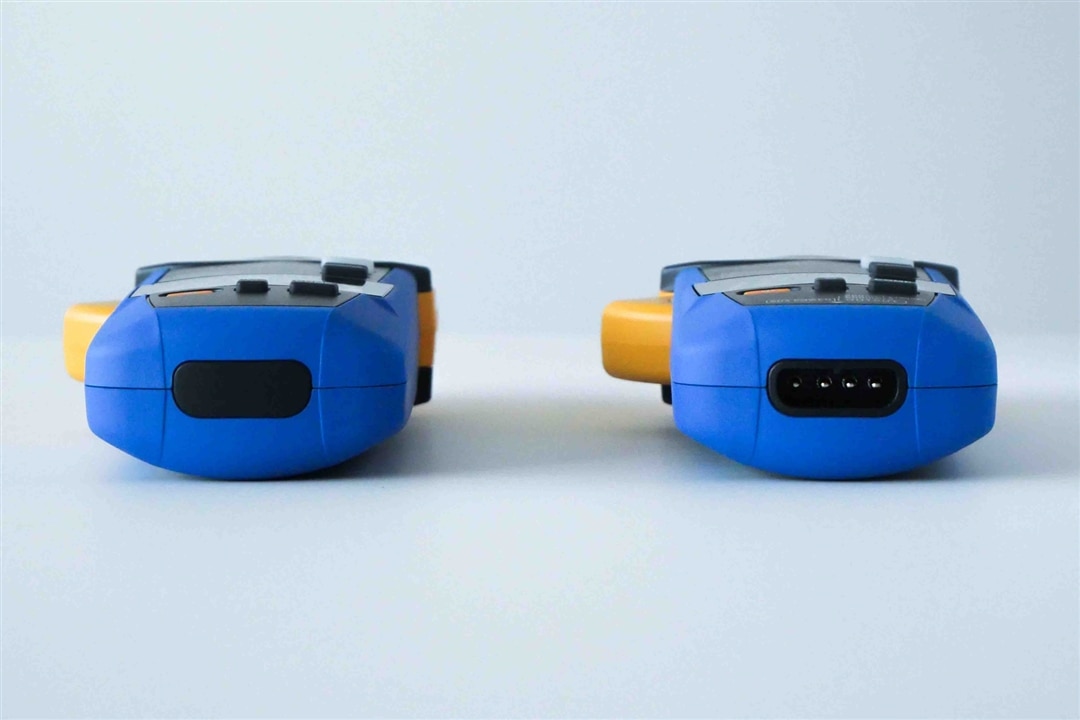No matter if they are based on hall-sensor or zero-fluxgate technology: HIOKI is famous for their high-end AC/DC current sensors - and they have been for many years. Given that history and experience, it is not surprising that HIOKI also offers a large variety of clamp meters, including three AC leakage current clamps.

Before going into the details of what makes each of these leakage current clamps special, let's look at what they all have in common:
- They all measure based on the TrueRMS principle
- All of them can of course not only measure AC leakage and differential currents but also AC load currents
- Bluetooth functionality can be added to all of them with HIOKI's universal Bluetooth transceiver Z3210, allowing the clamps to communicate with smartphones and tablets running HIOKI's free "Gennect Cross" app
- HIOKI's clamp meters are not only designed in Japan, but they are also made in HIOKI's own factories in Japan's Nagano prefecture

So lets look at the differences of these clamps. The above image shows HIOKI's CM4001 leakage current clamp. With a height of just 16cm from top to bottom and jaws that have been engineered to make them as narrow as possible, you can use them even in the most confined spaces while still measuring on cables which are up to 24mm in diameter. Should it become too inconvenient to read the white backlight and crispy clear display, then an optional Bluetooth transmitter (Z3210) allows you to read (and of course also store) the measurement values on your smartphone.
The smallest of the 5 current ranges is 60mA, with a guaranteed accuracy for values from 0.6mA. The largest current range of the CM4001 is 600A, the frequency band is from 40Hz to 1kHz and the measurement category is CAT III 300V. Even though the current clamp is so small, it is packed with functions like auto-hold, min/max/average or an inrush current measurement feature. The CM4001 has been designed to be a small yet powerful and universal leakage current clamp, made to be used in small and confined spaces and requiring little room in your toolbox.

Measuring 23.3cm from top to bottom, the CM4002 leakage current clamp is not only more than 7cm taller than the CM4001, it is also bigger in width and depth. This is because the CM4002 has been designed to provide the most accurate measurement results while allowing to be used on cables with a diameter of up to 40mm.
As a result the smallest of 6 current ranges of the CM4002 is just 6mA with a guaranteed accuracy for values from 0.06mA, while the largest current range is 200A. The frequency band is also wider than that of it's little brother, ranging from 15Hz to 2kHz, and the CM4002 complies to the IEC/EN 61557-13 standard which defines requirements for current clamps for measuring leakage currents in electrical installations, such as the protection against external magnetic fields (Class 2, magnetic fields ≤30A/m is what the CM4002 fulfils).

The third of the three leakage current clamps from HIOKI is the CM4003. Comparing the CM4002 with the CM4003 side-by-side, it is not easy to spot the differences between them. The physical dimensions are the same, and so are almost all technical specifications. It is easier to see the differences when comparing the two clamps side-by-side from a different view:

The connector at the bottom of the CM4003 allows for a special adapter cable to be connected to the meter. This adapter cable converts the 4-pin outlet of the CM4003 to these two connectors:
- A standard USB-C socket like the ones you find in most smartphones nowadays. It allows you to power the CM4003 externally in case you want to perform longer term measurements. The power can come from an optionally available HIOKI power supply unit, but nothing stops you from using any powerbank you would use to charge your smartphone
- A standard (male) BNC connector allows to output the measured current as a voltage which you can feed it into a memory recorder like HIOKI's MR8870

The external connector of the CM4003 does impact it's measurement category rating, which is CAT III 300V. In comparison, the CM4002 without the connector has a rating CAT IV 300V / CAT III 600V.
The adapter cable for the CM4003 leakage current clamp is called L9097 and it is included with every CM4003. The external USB power supply (Z1013) as well as the required USB-A-to-USB-C cable (L9510) are optional accessories. But again, the external power connector is a standard USB-C socket.
All three HIOKI CM400x leakage current clamps are available as bundle versions which have the Z3210 Bluetooth transmitter already included. These bundles are named CM400x-90.
So, whether you are looking for a small yet powerful AC leakage (and of course also load) current clamp like the CM4001, or whether you prefer a AC leakage current clamps with superb technical specifications or even an external output of the measured current - HIOKI's CM400x series will cover your needs.

